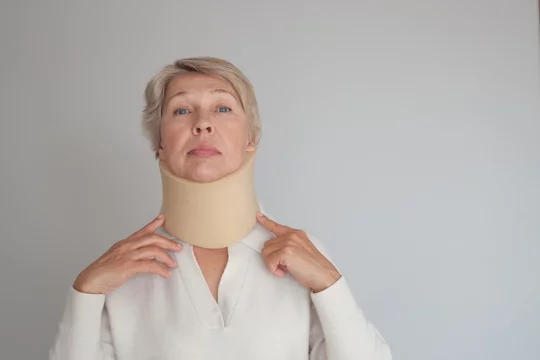A cervical fracture, often referred to as a broken neck, involves a break in one of the seven cervical vertebrae in the neck. These vertebrae support the head and connect it to the shoulders and body.
Causes and Risks of Cervical Fractures
Cervical fractures typically result from high-energy trauma such as car accidents or falls. Elderly individuals can suffer from these fractures even from ground-level falls, like falling from a chair. Athletes are also at significant risk, with common causes including:
- Football: A player “spearing” an opponent with the head.
- Ice Hockey: A player being struck from behind and ramming into the boards.
- Gymnastics: A gymnast missing the high bar during a release move.
- Diving: Striking the bottom of a shallow pool.
Consequences of Cervical Fractures
Any injury to the cervical vertebrae can have severe implications due to the proximity of the spinal cord, which runs through the center of these bones. Damage to the spinal cord can lead to paralysis or even death. Injury at the cervical level can result in temporary or permanent paralysis of the body from the neck down.
Emergency Response
In trauma situations, it is crucial to immobilize the neck until X-rays can be taken and reviewed. Emergency medical personnel will treat an unconscious individual as if they have a neck injury. Symptoms in conscious patients may include:
- Severe neck pain
- Pain radiating to the shoulders or arms
- Bruising and swelling at the back of the neck
A complete neurological examination and possibly additional imaging studies, such as MRI or CT scans, will be conducted to assess nerve function and the extent of the injury.
Treatment Options
The treatment for a cervical fracture depends on which of the seven cervical vertebrae is damaged and the type of fracture sustained:
- Minor Compression Fracture: Typically treated with a cervical brace worn for 6 to 8 weeks until the bone heals.
- Complex Fractures: May require traction, surgery, a rigid cast for 2 to 3 months, or a combination of these treatments.
Prevention Tips
Preventing cervical fractures involves safety measures and proper use of protective equipment:
- Always wear a seat belt in a car.
- Avoid diving into shallow pools and ensure young swimmers are supervised.
- Use proper protective gear in sports and adhere to safety regulations.
- Conduct home inspections to reduce fall risks for the elderly, such as taping down rugs and installing assistive devices in bathrooms.
Yoast SEO
- Focus Keyphrase: Cervical Fracture
- Meta Description: Learn about cervical fractures, their causes, symptoms, and treatments. Discover prevention tips to avoid broken neck injuries and ensure safety.
- Synonyms of Keywords: Broken neck, cervical vertebrae fracture, neck bone fracture
- Keyphrase: Cervical Fracture





